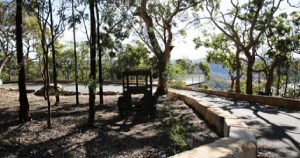By Kara Dubois
-
Winter Home and Fireplace Safety
The arrival of the winter means an increased risk of preventable house fires. As the weather cools down, people plug in their heaters, pull out the electric blankets and light up their fireplaces – all of which pose potential fire risks. There are some simple checklist items you should tick off each winter to make sure you’re keeping warm safely.

In our region of Sydney, fireplace maintenance is particularly important. If you have a fireplace in your home make sure its properly ventilated, the chimney or flue is clean, and always place a screen in front of it when in use. A common issue you may encounter when first using the fireplace after the warmer months, is smoke filling up the roof cavity or the living area in the house. This may be due to a build-up of deposits within the chimney, restricting airflow and creating a potential fire risk. Depending on usage, it is preferable to inspect and clean your fireplace every 1 to 2 years.
- Go through this checklist to be fire safe during the colder months:
• Have an adequate number of suitable smoke alarms installed throughout the house.
• Test smoke alarms and change the battery at least once every 12 months.
• A fire extinguisher and fire blanket kept in the kitchen near the exit.
• All items one metre away from heaters.
• Ensure power points aren’t overloaded.
• Household appliances switched off at power point when not in use.
• Electric blanket stored safely – roll don’t fold.
• Electric blankets checked for damage or frayed cords before placing on the bed.
• Lint filter cleaned before each use.
• Have a written home escape plan in case of fire (with two ways out of each room) and practice it regularly.
- Get to Know Your Local Hydrants
In case of a fire, firefighters may need to use water hydrants to access a water supply. These water hydrants are located underground, with their square covers located on the road or footpath. In urban areas, water hydrants are usually positioned along one side of the street about 50-100 metres apart, and in rural areas, they may be located over 200 metres apart. The most common cover style is one with the letter ‘H’ on the top and may be coloured in yellow.

In order for firefighters to find these hydrants, we look for hydrant markers. These markers look like small signs on posts, telegraph poles, or on the shoulder of the road or gutter. They can have the letters H, P or R stamped on them and a series of numbers.
Finding a hydrant quickly and easily is vital for firefighting operations. For this reason, it is important to ensure there are no obstructions preventing firefighters from locating and connecting hoses to hydrants.
- Keep a look out for the following, because hydrants may be hidden or unusable when;
• Grass or vegetation has grown over the hydrant cover.
• Dirt, earth or rubbish has been piled over a hydrant.
• Cars are parked on top of a hydrant.
• Gardens have been grown over a hydrant.
• Hydrants have been relocated due to building construction.
• Markers have worn out or been dislodged
• Insects have infested a hydrant
• If maintenance or marking is required, report it to your local fire station, council or water authority.
You should always think about being fire ready. Visit the RFS website: www. rfs.nsw.gov.au or call the Bush Fire Information Line – 1800 NSW RFS (1800 679 737) for more information.
BRIGADE CONTACT DETAILS: Duty mobile 0491 119 152 Email: [email protected]
fireplace safety fireplace safety fireplace safety fireplace safety fireplace safety







